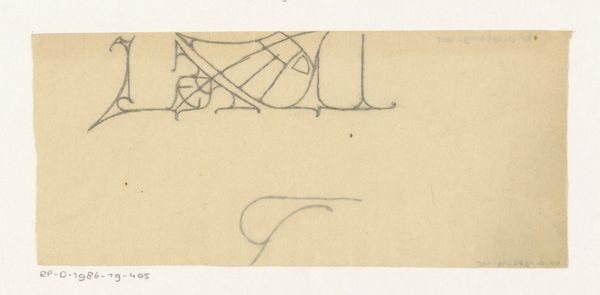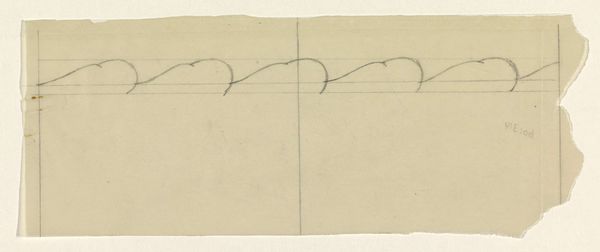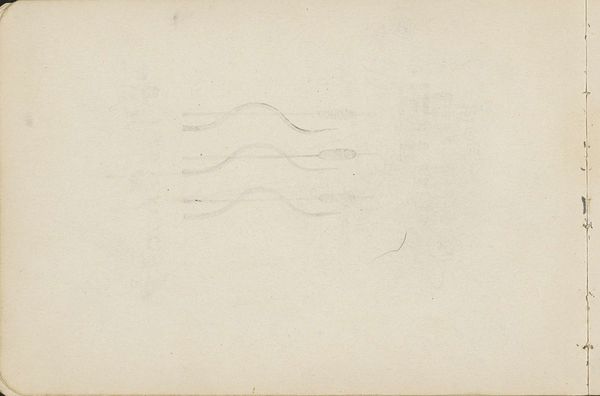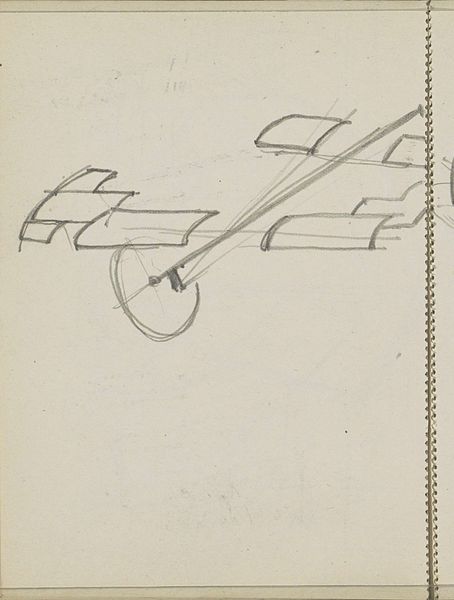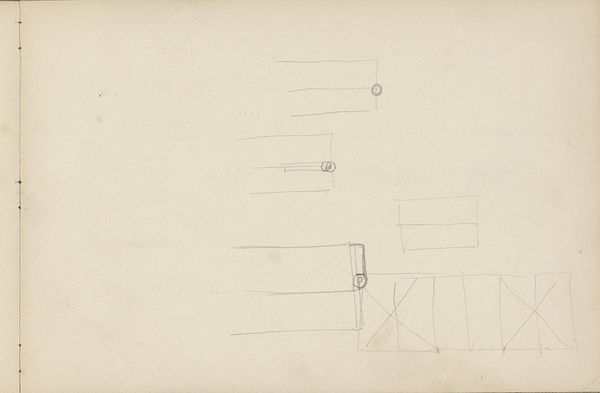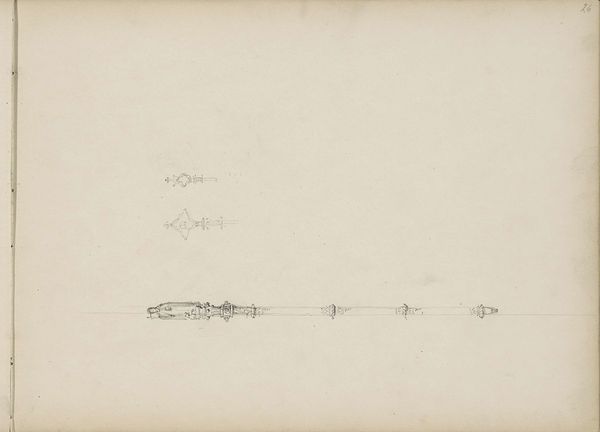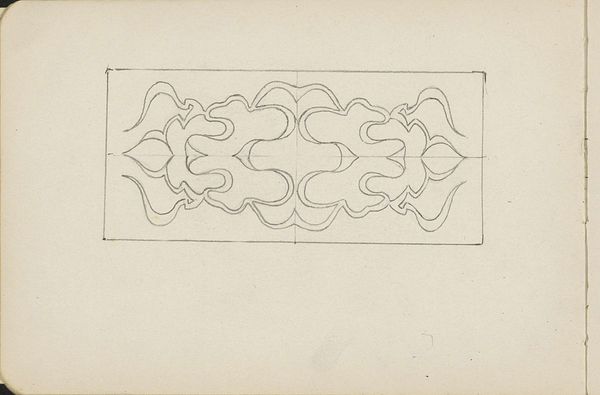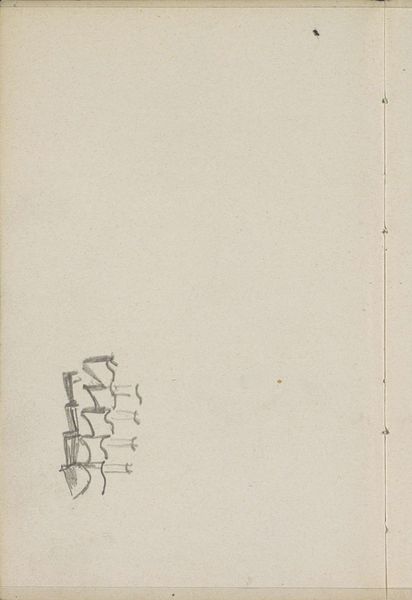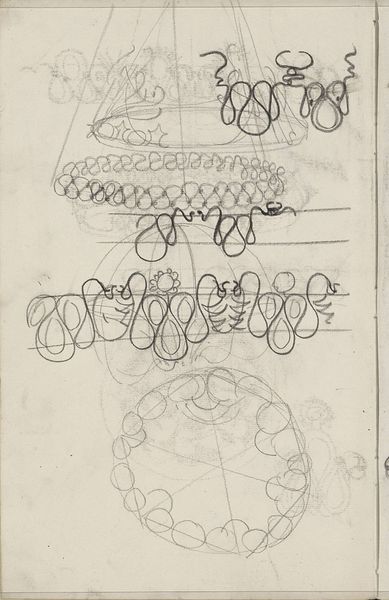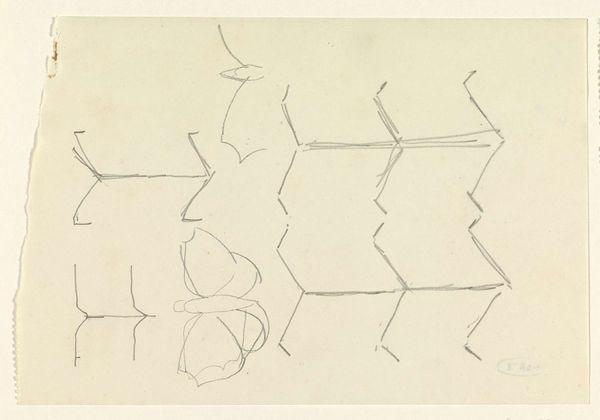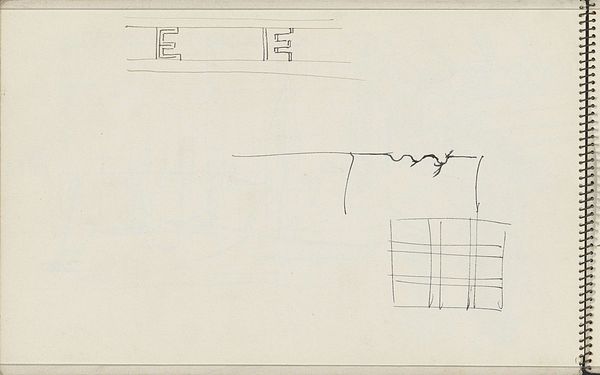
drawing, paper, pencil
#
drawing
#
art-nouveau
#
paper
#
form
#
geometric
#
pencil
#
line
Copyright: Rijks Museum: Open Domain
Editor: So, this is "Ornamenteel krulpatroon," or "Ornamental Curl Pattern," by Julie de Graag, dating back to about 1894. It’s a pencil drawing on paper, and it strikes me as wonderfully simple, almost meditative in its repetition. What do you see in this piece? Curator: I'm struck by its quiet confidence. De Graag, working within the Art Nouveau movement, wasn’t just copying pretty swirls; she was deconstructing form itself. It feels like she’s asking, “What’s the essence of a curl? What’s the bare minimum needed to suggest flow and movement?" Those pencil lines, so delicate, seem to whisper rather than shout. Do you get that feeling, too? Editor: Definitely! The precision is almost scientific, but there’s a softness that keeps it from feeling sterile. It’s a drawing, but you could imagine it as a detail from architecture or textile design. Curator: Exactly! Art Nouveau aimed to blur those boundaries, to make art part of everyday life. And de Graag does it beautifully. It also speaks to the artist's vision: I'm thinking of it as seeing the world anew. The closer I look at this pattern, the more possibilities of infinite growth, infinite form I start imagining. Editor: It's amazing how much depth can be found in such a minimal sketch. It makes me appreciate the thought process behind even seemingly simple designs. Curator: And perhaps, a quiet reminder that sometimes the most profound beauty lies in the understated. What you notice *in between* those swirls almost matters more than the swirls themselves, like tiny symphonies waiting to be orchestrated!
Comments
No comments
Be the first to comment and join the conversation on the ultimate creative platform.
